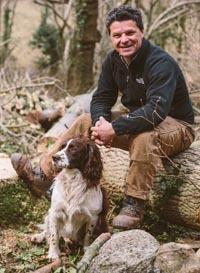What do you think?
Rate this book


256 pages, Paperback
First published December 1, 2015
 BOTW
BOTW http://www.bbc.co.uk/programmes/b06s8716
http://www.bbc.co.uk/programmes/b06s8716 1: A search for the perfect tree in woodland in South Wales
1: A search for the perfect tree in woodland in South Wales 2: Robert fells an ash and begins to make things from it
2: Robert fells an ash and begins to make things from it 3: A piece of the ash is taken to the best of wood-turners
3: A piece of the ash is taken to the best of wood-turners 4: A sledge is made in Austia
4: A sledge is made in Austia 5: After a year, Robert finally has his new writing desk
5: After a year, Robert finally has his new writing desk